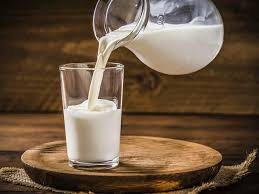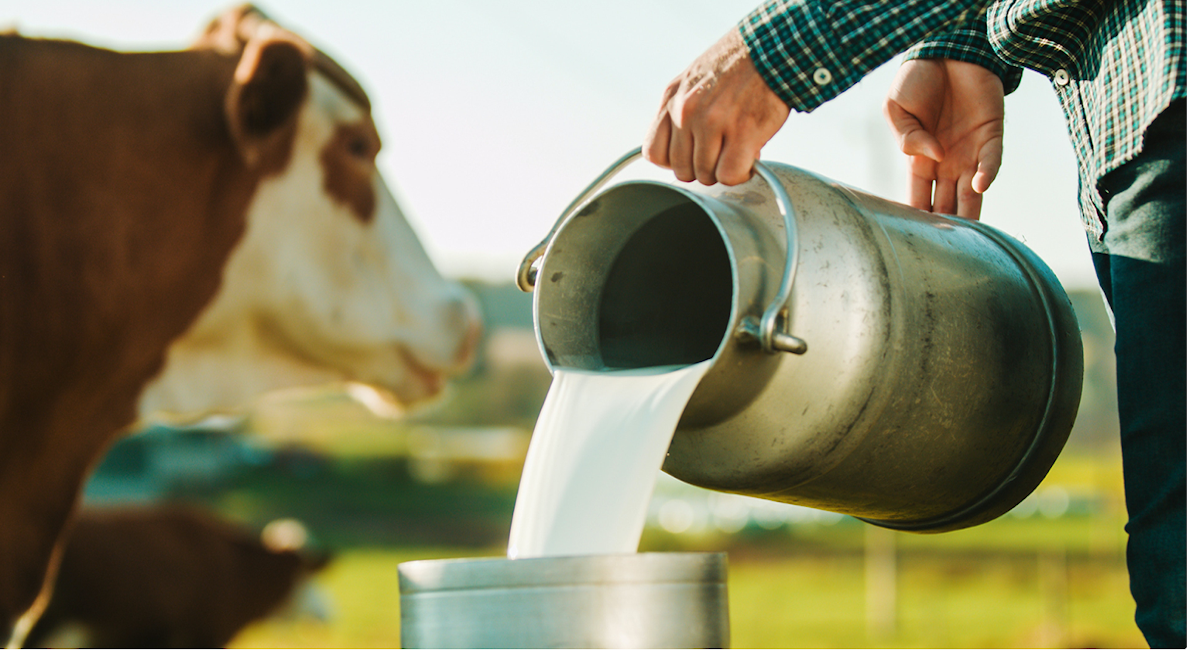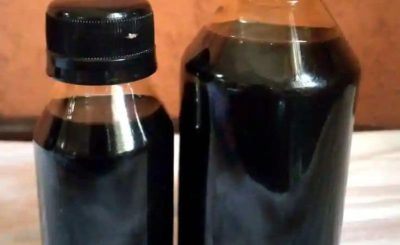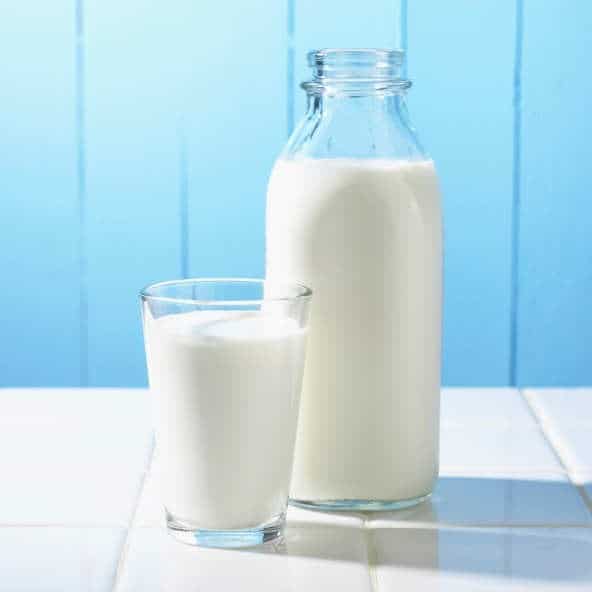Views: 29
“Debunking Myths About Raw Milk: Facts You Need To Know”

Milk is important for bone health, both for adults and children. According to different studies, kids aged 1 to 5 get almost 20% of their daily calories from raw milk.
However, there are also many popular myths about raw milk. Let’s look into these myths to understand health and nutrition better!
Myths About Raw Milk
- Healthy, Organic, Grass-fed Cows Produce Safe Raw Milk That Doesn’t Need Processing.
This is not true. Even if farmers practice good hygiene and treat their cows well, the risk of contamination remains. Raw milk can become contaminated in various ways on the farm, not just because a cow is sick or stressed.
Cows carry many germs, especially in their poop, and these germs can also be on their skin. These germs don’t always mean the cow is sick. Germs are everywhere on a farm—in the barns, on milking equipment, and around because there are many people and animals. Sometimes, the cow’s udder is infected with something called mastitis. The contamination might not even come from the cow itself but from small animals, rodents, and insects near the milking machines. Dairy workers can also contaminate the milk with dirty hands, boots, or clothing.
Studies show that even if cows look healthy, their raw milk can still be contaminated and make people sick. A large study in New Zealand found that even healthy cows‘ raw milk can have dangerous bacteria like E. coli, Listeria monocytogenes, Salmonella, and Campylobacter. These bacteria can cause serious illness or even death, especially for pregnant women, young children, the elderly, or those with weak immune systems. It’s safer to assume that raw milk contains something harmful. Different studies have different numbers, but one says up to 30% of raw milk has a pathogen, while another suggests up to one-third of raw milk contains at least one harmful bacterium. The point is, even happy, healthy cows don’t make milk safe to drink—only pasteurization does.
- Raw Milk Can Help With Lactose Intolerance.
All milk, including raw milk, contains lactose, a type of sugar. Some people can’t digest lactose well because they either don’t have the enzyme needed, or the enzyme stops working as well as they get older. This can cause discomfort, bloating, gas, and diarrhea when they drink milk or eat dairy products.
Raw milk, pasteurized milk, or any type of milk won’t help with lactose intolerance because they don’t contain the enzyme lactase (also called beta-galactosidase), which is needed to break down lactose.
Studies have compared raw milk to pasteurized milk, and neither can reduce lactose intolerance symptoms since neither contains the enzyme necessary for digestion.
- Raw Milk Contains Good Bacteria That Pasteurized Milk Does Not Have.
First, pasteurization does not kill all microorganisms. It uses specific temperatures and times to remove harmful bacteria that can make us sick. This is different from sterilization, which kills all forms of life. Pasteurization only targets the bad germs, not all of them.
Now, about these good bacteria, called probiotics. Probiotics are helpful microorganisms that can improve our health, especially our digestion, but only if we consume them in very large amounts—millions or even billions of cells. This is because many of these bacteria are destroyed by stomach acid or in the intestines before they reach the part of the gut where they can help us. So, foods that claim to have probiotic benefits need to contain a huge number of these bacteria. In raw milk, the amount of these beneficial bacteria is very low—not nearly enough to provide any real health benefits.
- Raw Milk Can Protect Against Asthma And Allergies.
This idea came from some European studies that found people who drank raw milk had lower rates of these conditions. However, this was just a correlation—meaning that people who drank raw milk happened to have fewer cases of asthma and allergies. There’s no proof that raw milk was the reason.
In fact, a lot of research has been done to see if raw milk is a protective factor, but this has never been confirmed. The general belief is that growing up on a farm is what really provides protection. Farm life exposes children to various animals, bacteria, and allergens from a young age. This environment, which is very different from growing up in a city, seems to help protect against asthma and allergies.
There was a study that looked at the Amish and Old Order Mennonites. These groups live traditional farming lifestyles with large families, where everyone helps out on the farm from a young age. This way of living helps protect them—they have very low rates of allergies and asthma because of how they grow up.
- Raw Milk Is More Nutritious Than Pasteurized Milk.
You may have heard many versions of this claim, like “raw milk has more nutrients,” “raw milk has better protein,” or “raw milk has more vitamins and minerals.” This all comes down to what pasteurization actually does to milk.
Pasteurization is when raw milk is heated to a certain temperature for a specific time to kill harmful germs. It doesn’t kill all microorganisms, just the ones that can make people sick.
However, pasteurization affects the nutrients in milk. First, let’s look at minerals. Pasteurization doesn’t change the amount of minerals like calcium and phosphorus in the milk. These minerals are very stable when heated, so their levels stay the same before and after pasteurization.
Most of the protein in milk comes from casein, which makes up about 80% of it. Casein is a unique protein because it doesn’t have a lot of structure—it’s flexible and free-flowing. This means that even when exposed to high heat, casein doesn’t denature. “Denature” means the protein unfolds and loses its original structure, which can happen with too much heat or pressure.
Casein is special because it doesn’t denature like other proteins do. You can heat casein in milk at 140°C for over an hour, and it still won’t change. That’s a very intense heat treatment, and pasteurization is much gentler. The other protein in milk is whey, which makes up about 20% of the protein. Pasteurization causes a tiny portion of the whey—less than 7%—to denature, but this doesn’t affect how the protein is digested or it’s quality.
When some proteins are denatured during food processing, it can actually make them easier to digest. Denatured proteins unfold, making it simpler for our digestive enzymes to break them down. So, even though a small amount of whey protein might denature, it doesn’t harm the food’s quality.
vitamins
Now, let’s talk about vitamins. If you check the label, you’ll see that milk has a good amount of vitamins A and D (if it’s fortified) and vitamin B2, also known as riboflavin. Vitamins A and D are fat-soluble and are added to the milk after pasteurization to help prevent human diseases or malnutrition. So, these vitamins remain unchanged during processing.
Vitamin B2, or riboflavin. It’s a water-soluble vitamin that is very heat-stable, so its levels stay the same during pasteurization. However, pasteurization can cause a small loss—less than 10%—of some other vitamins like vitamin C, B9, B12, B6, and B1. Of these, only vitamin B12 is in high enough amounts to be listed on the milk as a good source. The other vitamins are in such small amounts that they don’t significantly affect health.
You might think that losing less than 10% of vitamins is a lot, but other factors have a bigger impact. For example, the type of packaging, light exposure, storage time, and storage temperature can cause more nutrient loss than pasteurization.
Conclusion
You might be able to have some dairy in your diet. If dairy isn’t included, calcium and vitamin D can be gotten from other foods or supplements. A common over-the-counter supplement of 500 mg calcium and 600 IU vitamin D usually works well. Talk to your pediatrician before starting any new supplement.
By kingkentus








You must be logged in to post a comment.